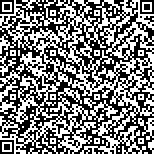| 引用本文: | 张成岗,巩文静,李志慧,高大文,高艳.菌心进化论:一种对于动物进化的新理解[J].生物信息学,2018,16(4):203-213. |
| ZHANG Chenggang,GONG Wenjing,LI Zhihui,GAO Dawen,GAO Yan.Gut flora-centric theory of evolution: A new model for understanding the evolution of animals[J].Chinese Journal of Bioinformatics,2018,16(4):203-213. |
|
| |
|
|
| 本文已被:浏览 3338次 下载 2138次 |

码上扫一扫! |
|
|
| 菌心进化论:一种对于动物进化的新理解 |
|
张成岗,巩文静,李志慧,高大文,高艳
|
|
(军事科学院军事医学研究院 辐射医学研究所,全军军事认知与心理卫生研究中心,北京 100850)
|
|
| 摘要: |
| 达尔文进化论强调了“物竞天择,适者生存”的理念与逻辑,对动物起源与进化提供了重要解释;然而,为什么会有动物、以及为什么会进化出人类等问题,却仍无答案。在我们实验室近年来从事肥胖及相关慢病研究中发现“饥饿源于菌群”并发展出可通过控制肠道菌群向人体传递的饥饿感的生物技术之后,提出科学假说认为,和人类同样具有消化道结构的动物,很有可能也是受到肠道菌群摄食的胁迫压力而进化的,即动物和人体的消化道以“中空”的拓扑学结构为基础,形成可容纳与相应动物种类相适应的肠道菌群微生态系统。这些肠道菌群终生共生于肠道,通过向动物传递饥饿感而迫使动物摄食而生存,同时肠道菌群也通过动物摄食的营养物质繁殖自己的后代,从而提出了以肠道菌群为中心、动物受肠道菌群胁迫而协同进化的“菌心进化论”,是对“宿主进化论”的重要补充和完善,有利于我们从新的角度来理解和诠释动物的起源、进化和发展过程,乃至促进我们逐渐理解自然界从动物进化到人类之后,有可能是在实现从菌群主导的以食物为代表的“物质需求”向人类智慧主导的“精神需求”的新跃迁。 |
| 关键词: 生命起源与进化 达尔文进化论 饥饿源于菌群 万有菌力 菌心说 菌心学说 生物拓扑学 共进化 菌心进化论 物质需求 精神需求 |
| DOI:10.12113/j.issn.1672-5565.201809003 |
| 分类号:Q111 |
| 文献标识码:A |
| 基金项目: |
|
| Gut flora-centric theory of evolution: A new model for understanding the evolution of animals |
|
ZHANG Chenggang, GONG Wenjing, LI Zhihui, GAO Dawen, GAO Yan
|
|
(Institute of Radiation Medicine, Academy of Military Medical Sciences, Academy of Military Sciences,Military Cognitive and Mental Health Research Center of PLA, Beijing 100850, China)
|
| Abstract: |
| Survival of the fittest” is the key issue in Darwinian evolutionary theory, which describes the mechanism of natural selection for species to leave the most copies of themselves in successive generations. However, there is still no clear answer to the old question: what is the purpose and motivations for animals and human beings to live on the earth? Unexpectedly, during our study on obesity and related diseases such as diabetes, hyperlipemia, and hypertension, we found that these kinds of chronic diseases are closely related to the human behavior of eating, where the key issue is that human hunger sensation comes from the gut flora other than the food-intake center in the human brain. After we used the flexible fasting technology to control the hunger sensation sent from the gut flora to the human brain, we finally understood that human beings and animals have the same hollow topology structure of gut, which is the home of the gut flora that keeps sending eating signals to the brains of human beings and animals. Therefore, we developed a new model, namely, the “gut flora-centric theory of evolution (GFCTE)”, to bring new ideas to understand the evolution of the animal world. In this model, we hypothesized that most of the animals live under the stress of hunger sensation which comes from their special gut floras. Since the gut flora has the natural potential and possibility to breed their babies, which is the original power of life and is expressed as biochemical reactions, the food-intake signals will cause the gut flora to obtain nutrition from the guts of animals. When animals feel the hunger sensation from their gut flora, which is expressed as the gut flora “eating” the gut mucosa, they will have to eat food to protect the gut mucosa from being digested and destructed by the gut flora. We considered this issue as the natural motivation of the eating behavior of animals as well as human beings. Different animals have their own special gut flora in their guts, while different gut floras have special animals as their hosts. Based on this, we finally recognized that the evolution of animals strictly follows the stress of the gut flora by sending hunger sensation signals to their hosts, which means the animals are positively selected by the gut flora. Taken together, although the structures of animal bodies are driven and controlled by their own genomic DNA systems, animals actually coevolve under the stress of the genomic DNA systems of their special gut flora. With more and more evidence on the material needs (typically and especially the food for the animals) driven by the gut flora, our GFCTE theory will figure out the issue that the spiritual demands are driven by the human brains, where animals are at middle and different stages in the evolution from the material world to the spiritual world. |
| Key words: Origin and evolution of life Darwins theory of evolution Hunger sensation comes from gut flora Universal fertility power of the gut flora Gut flora-centric theory Biological topology Co-evolution Gut flora-centric theory of evolution Materials demands Spiritual demands |
|
|
|
|






